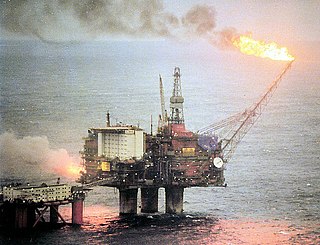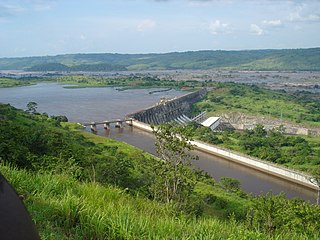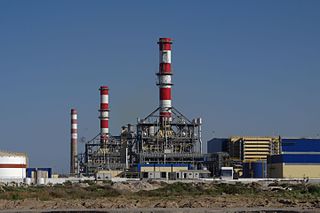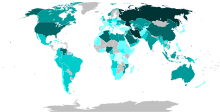
Japan is a major consumer of energy, ranking fifth in the world by primary energy use. Fossil fuels accounted for 88% of Japan's primary energy in 2019. Japan imports most of its energy due to scarce domestic resources. As of 2022, the country imports 97% of its oil and is the larger LNG importer globally.
The energy policy of India is to increase the locally produced energy in India and reduce energy poverty, with more focus on developing alternative sources of energy, particularly nuclear, solar and wind energy. Net energy import dependency was 40.9% in 2021-22.

Iran possesses significant energy reserves, holding the position of the world's third-largest in proved oil reserves and the second-largest in natural gas reserves as of 2021. At the conclusion of the same year, Iran's share comprised 24% of the oil reserves in the Middle East and 12% of the worldwide total.

Norway is a large energy producer, and one of the world's largest exporters of oil. Most of the electricity in the country is produced by hydroelectricity. Norway is one of the leading countries in the electrification of its transport sector, with the largest fleet of electric vehicles per capita in the world.

Brazil is the 7th largest energy consumer in the world and the largest in South America. At the same time, it is an important oil and gas producer in the region and the world's second largest ethanol fuel producer. The government agencies responsible for energy policy are the Ministry of Mines and Energy (MME), the National Council for Energy Policy (CNPE), the National Agency of Petroleum, Natural Gas and Biofuels (ANP) and the National Agency of Electricity (ANEEL). State-owned companies Petrobras and Eletrobras are the major players in Brazil's energy sector, as well as Latin America's.
Energy in Kazakhstan describes energy and electricity production, consumption and import in Kazakhstan and the politics of Kazakhstan related to energy.

The Energy in Russia is an area of the national economy, science, and technology of the Russian Federation, encompassing energy resources, production, transmission, transformation, accumulation, distribution, and consumption of various types of energy.
Energy security of the People's Republic of China concerns the need for the People's Republic of China to guarantee itself and its industries long- term access to sufficient energy and raw materials. China has been endeavoring to sign international agreements and secure such supplies; its energy security involves the internal and foreign energy policy of China. Currently, China's energy portfolio consists mainly of domestic coal, oil and gas from domestic and foreign sources, and small quantities of uranium. China has also created a strategic petroleum reserve, to secure emergency supplies of oil for temporary price and supply disruptions. Chinese policy focuses on diversification to reduce oil imports, which used to rely almost exclusively on producers in the Middle East.

The Democratic Republic of the Congo was a net energy exporter in 2008. Most energy was consumed domestically in 2008. According to the IEA statistics the energy export was in 2008 small and less than from the Republic of Congo. 2010 population figures were 3.8 million for the RC compared to CDR 67.8 Million.

This article describes the energy and electricity production, consumption and import in Egypt.

Energy in Italy comes mostly from fossil fuels. Among the most used resources are petroleum, natural gas, coal and renewables. Italy has few energy resources, and most supplies are imported.
Energy in Libya primarily revolves around the production, consumption, import, and export of energy, with a significant focus on the petroleum industry, which serves as the backbone of the Libyan economy. As of 2021, Libya is recognized as the seventh-largest crude oil producer in OPEC and ranks third in total petroleum liquids production in Africa. The country holds 3% of the world's proven oil reserves and 39% of Africa's, marking it as a key player in the global energy sector. Despite its abundant resources, the energy industry in Libya has faced significant challenges due to political instability following the civil war that began in 2011. These challenges have led to frequent disruptions in oil production and exports, directly impacting the national economy and its contributions to the global oil market. The sector's future is closely tied to the resolution of political conflicts and the effective management of its vast hydrocarbon resources.

Primary energy consumption in Spain in 2020 was mainly composed of renewable sources. The largest sources are petroleum (42.3%), natural gas (19.8%) and coal (11.6%). The remaining 26.3% is accounted for by nuclear energy (12%) and different renewable energy sources (14.3%). Domestic production of primary energy includes nuclear (44,8%), solar, wind and geothermal (22,4%), biomass and waste (21,1%), hydropower (7,2%) and fossil (4,5%).
Energy in Iraq plays a crucial role in both the national economy and the global energy markets due to the country's vast oil reserves and significant status within the Organization of the Petroleum Exporting Countries (OPEC).

Energy in Greece is dominated by fossil gas and oil. Electricity generation is dominated by the one third state owned Public Power Corporation. In 2009 DEI supplied for 85.6% of all electric energy demand in Greece, while the number fell to 77.3% in 2010. Almost half (48%) of DEI's power output in 2010 was generated using lignite. 12% of Greece's electricity comes from hydroelectric power plants and another 20% from natural gas. Between 2009 and 2010, independent companies' energy production increased by 56%, from 2,709 Gigawatt hour in 2009 to 4,232 GWh in 2010.
Energy in Estonia has heavily depended on fossil fuels. Finland and Estonia are two of the last countries in the world still burning peat.

Energy in Jordan describes energy and electricity production, consumption and import in Jordan. Jordan is among the highest in the world in dependency on foreign energy sources, with 92.3% of the country's energy supply being imported.

Energy in Lebanon is dominated by oil, which represents more than 95% of the primary energy consumed in 2017. The great majority of energy used in the country is imported. The energy market in Lebanon is characterized by sharply rising consumption, and frequent shortages due to dilapidated infrastructure partly destroyed by the civil war that ravaged the country between 1975 and 1990.
Uzbekistan had a total primary energy supply (TPES) of 48.28 Mtoe in 2012. Electricity consumption was 47.80 TWh. The majority of primary energy came from fossil fuels, with natural gas, coal and oil the main sources. Hydroelectricity, the only significant renewable source in the country, accounted for about 2% of the primary energy supply. Natural gas is the source for 73.8% of electricity production, followed by hydroelectricity with 21.4%.

The energy sector in Tunisia includes all production, processing and, transit of energy consumption in this country. The production involves the upstream sector that includes general oil and gas, the downstream sector that includes the only refinery in Tunisia and most of the production of natural gas, and varied electrical/renewable energies. Renewable energy has been a strong point of focus for Tunisia as they look to optimize their green energy sources and advance their developing country. The Tunisian government has partnered with Russia and France in hopes of establishing nuclear energy as a viable alternative to fossil fuels and taking up a nontrivial chunk of the energy production in Tunisia. This is expected to be accomplished in the 2020s.
















